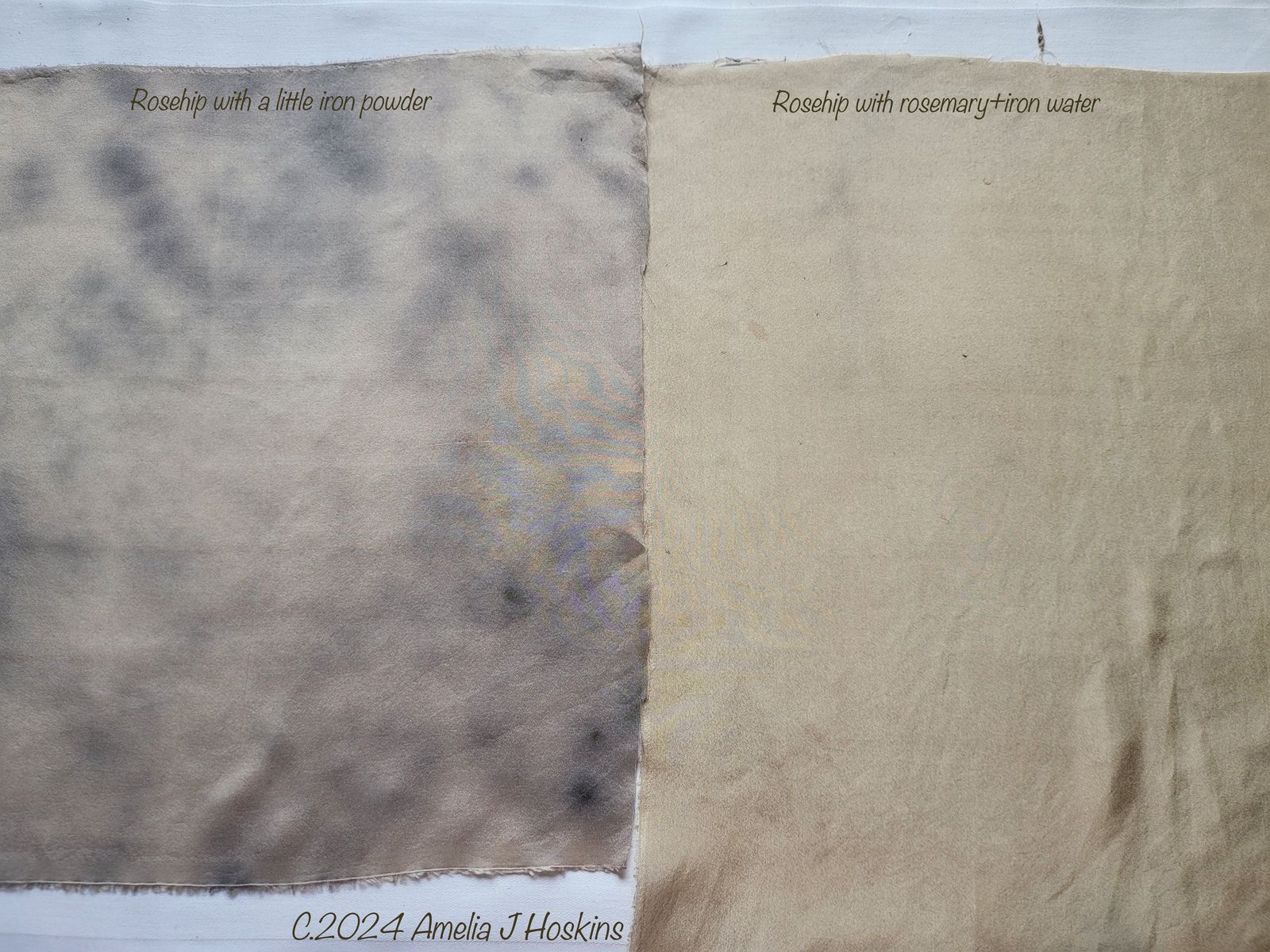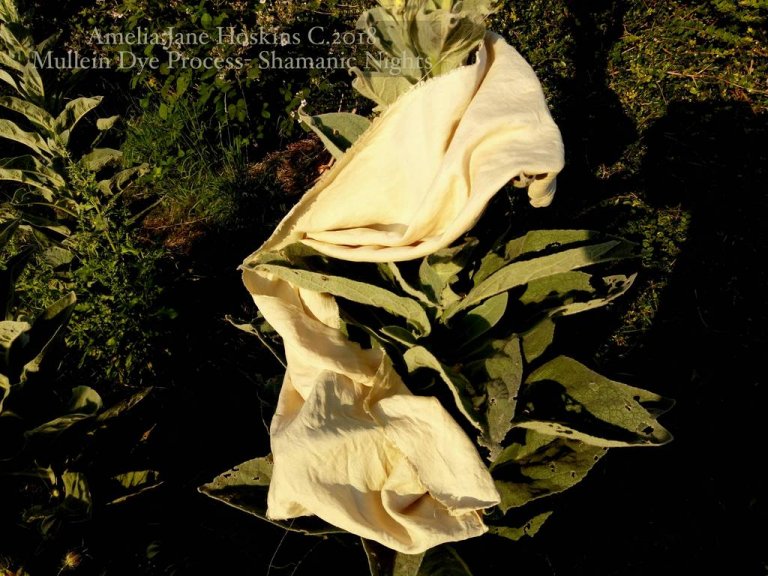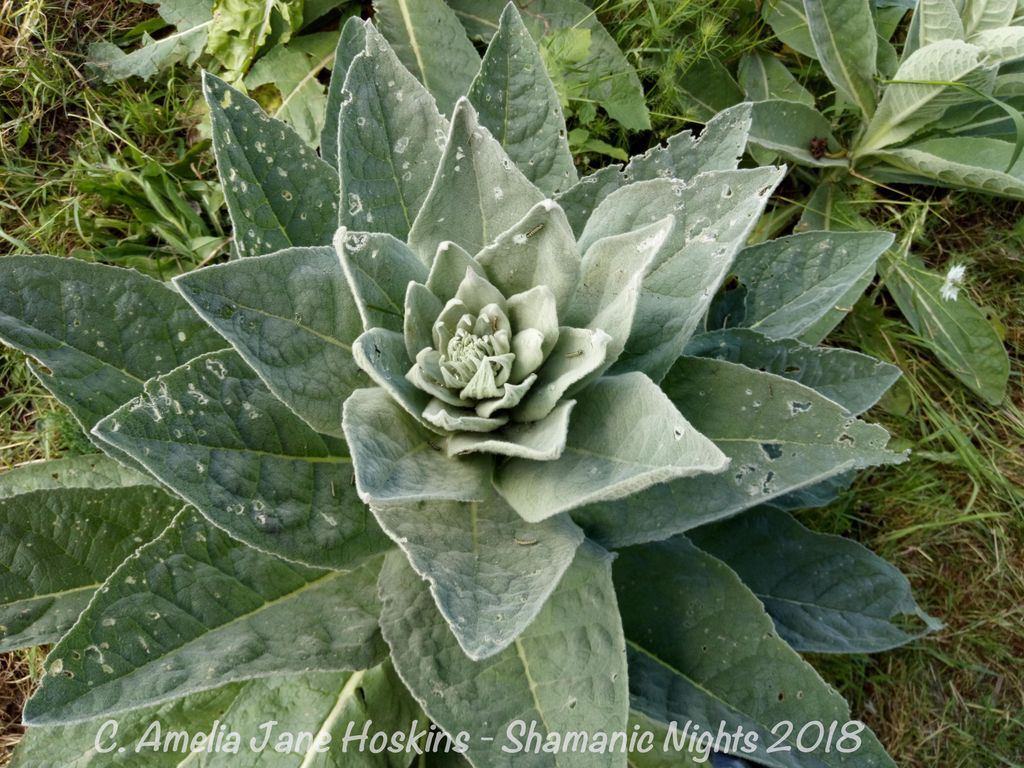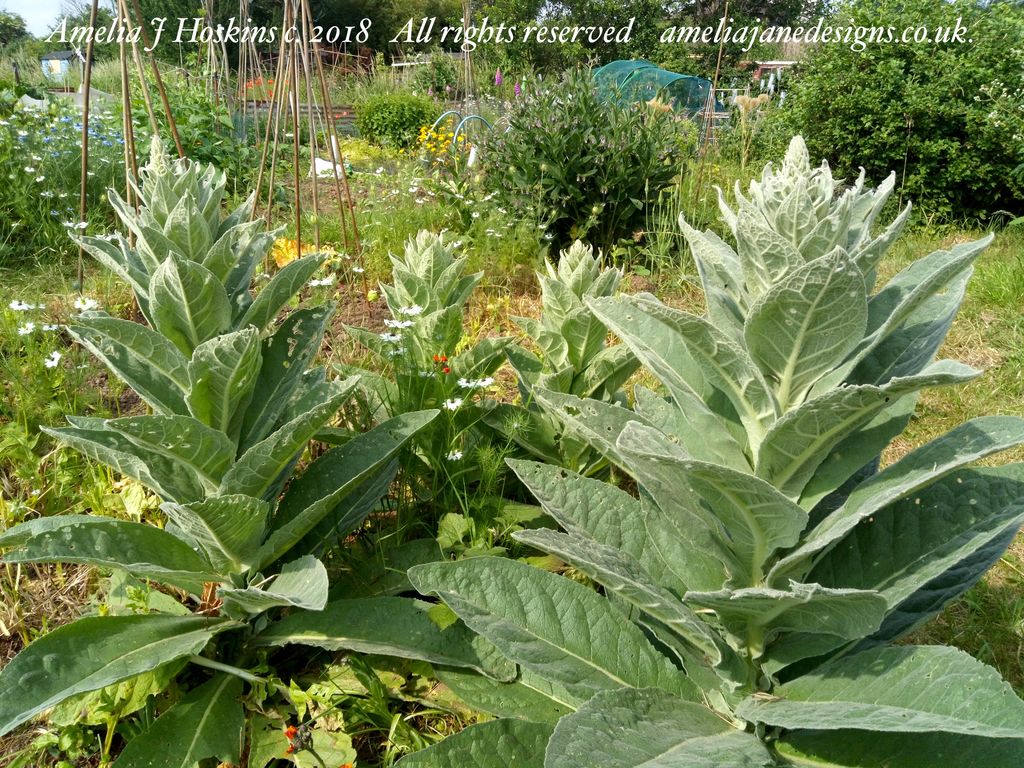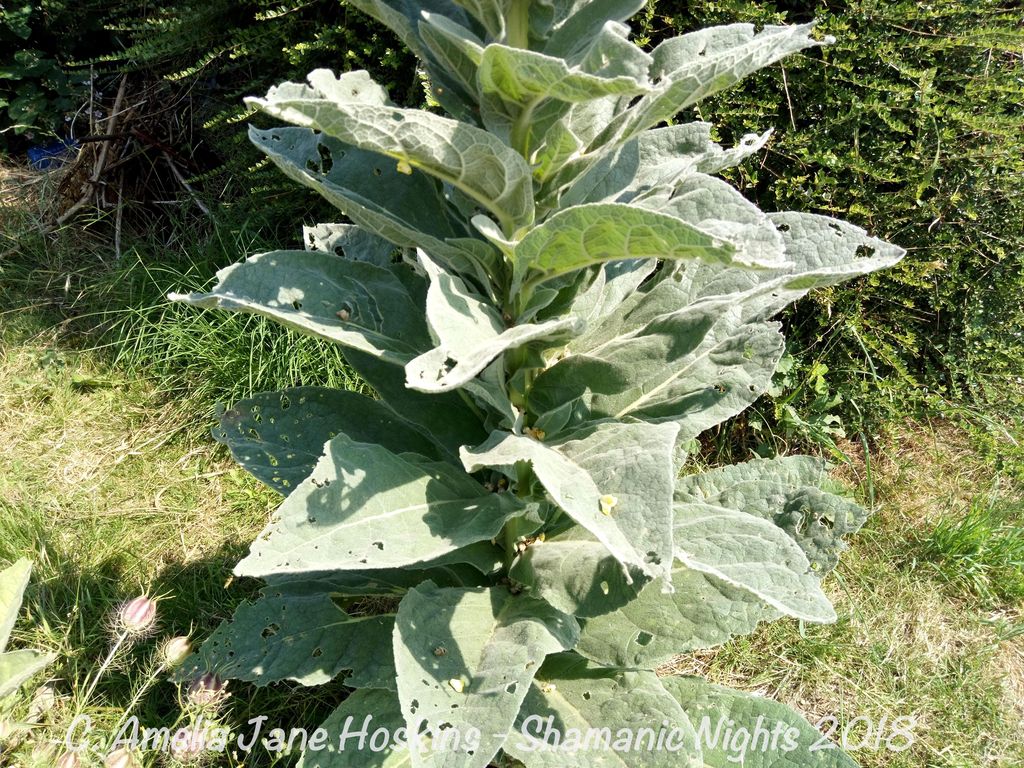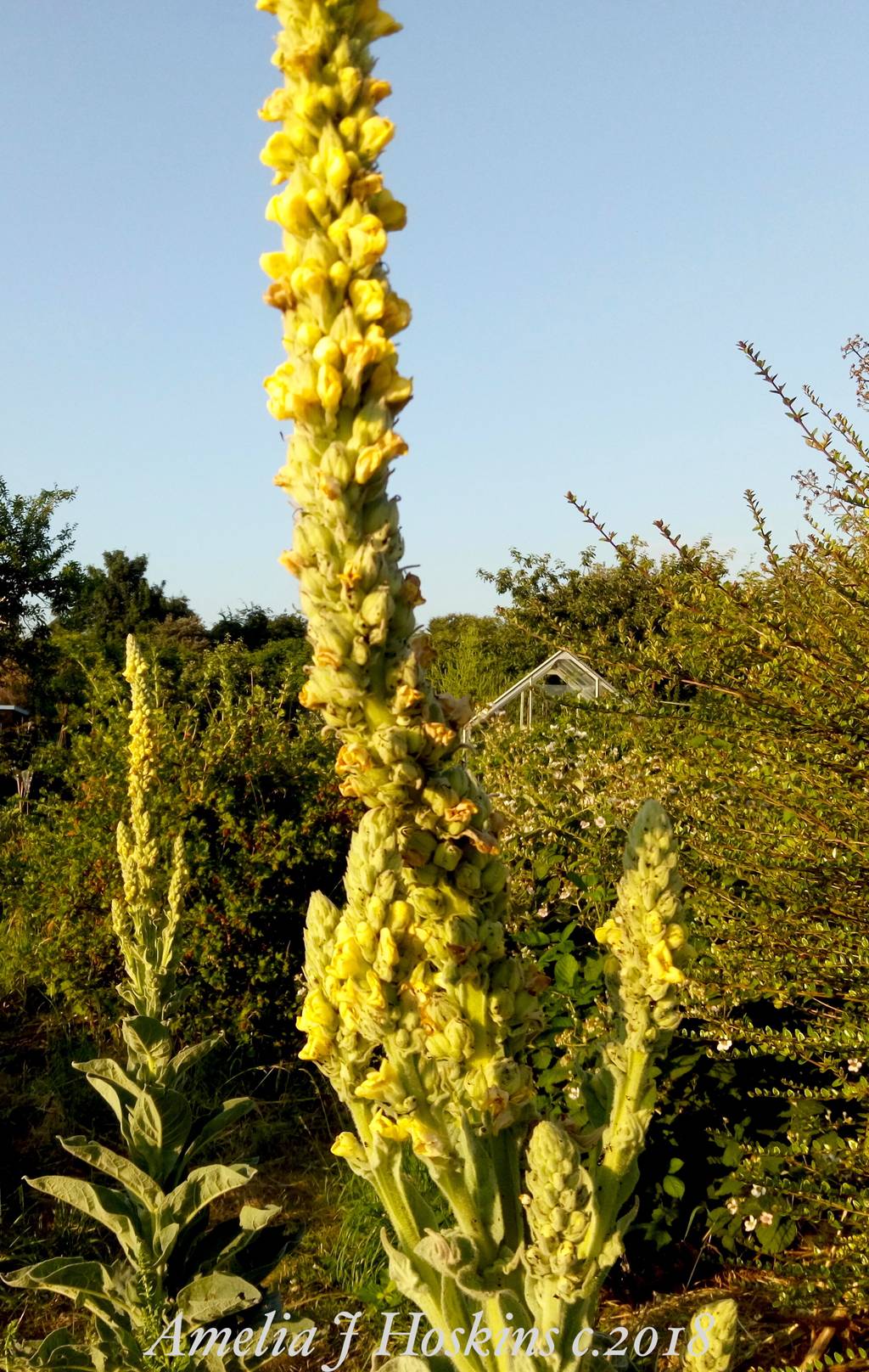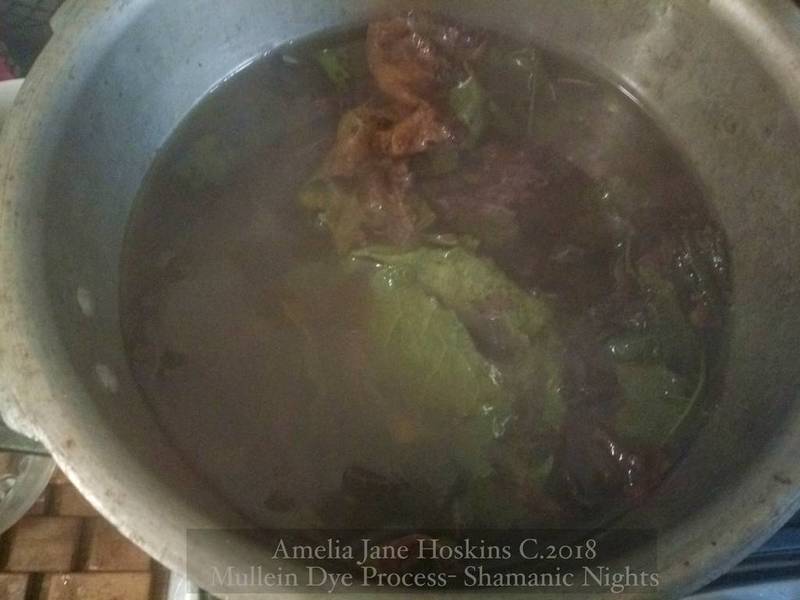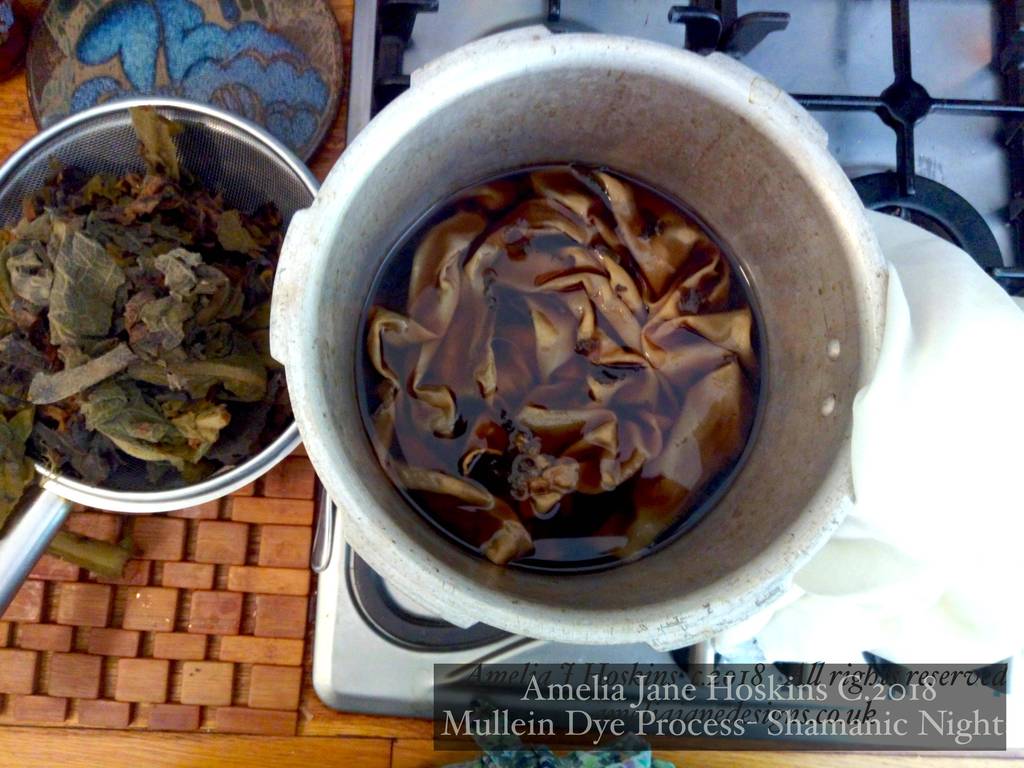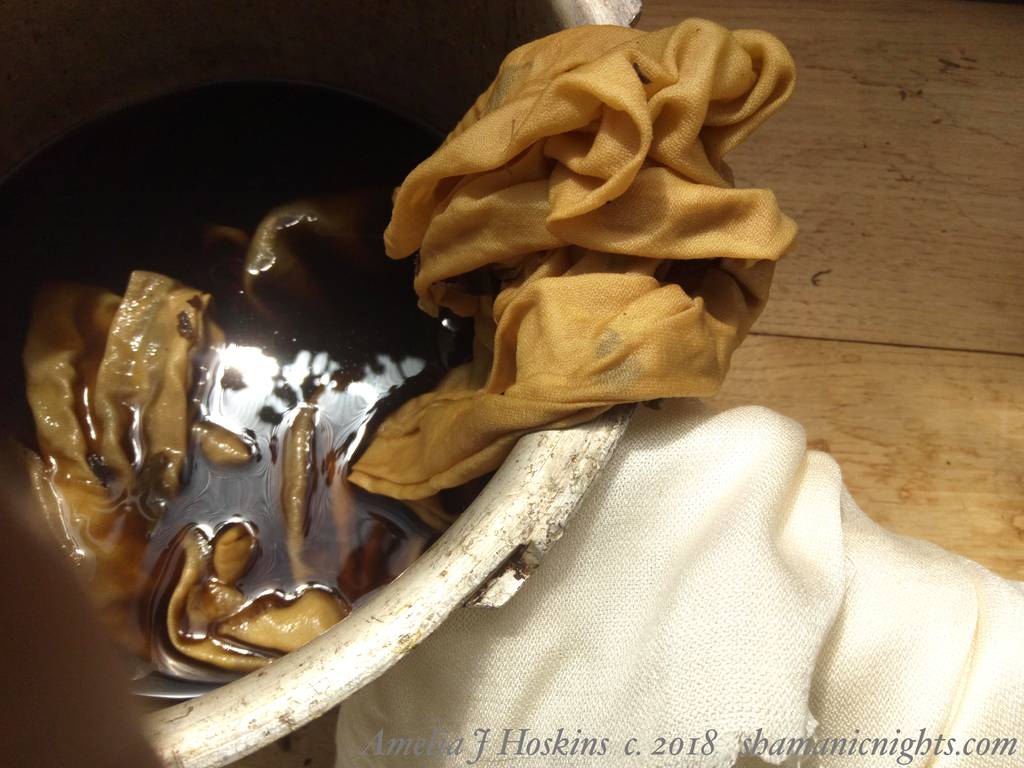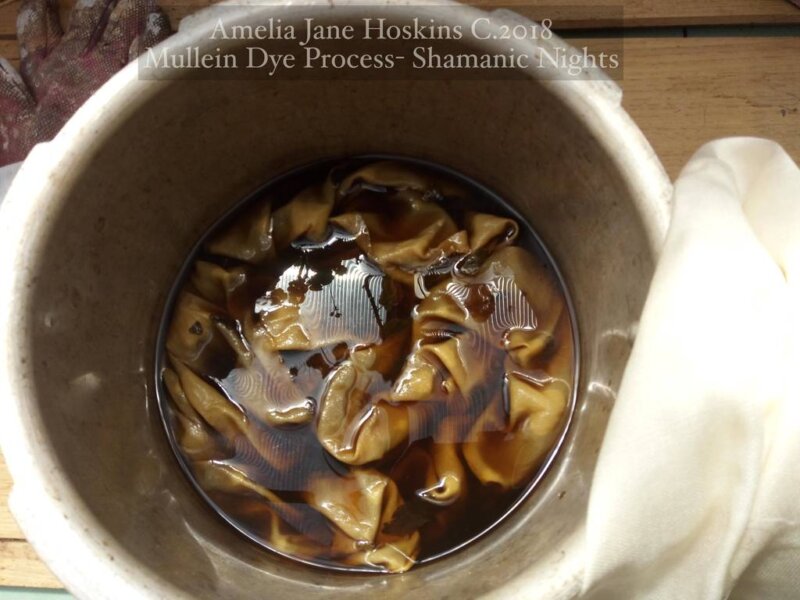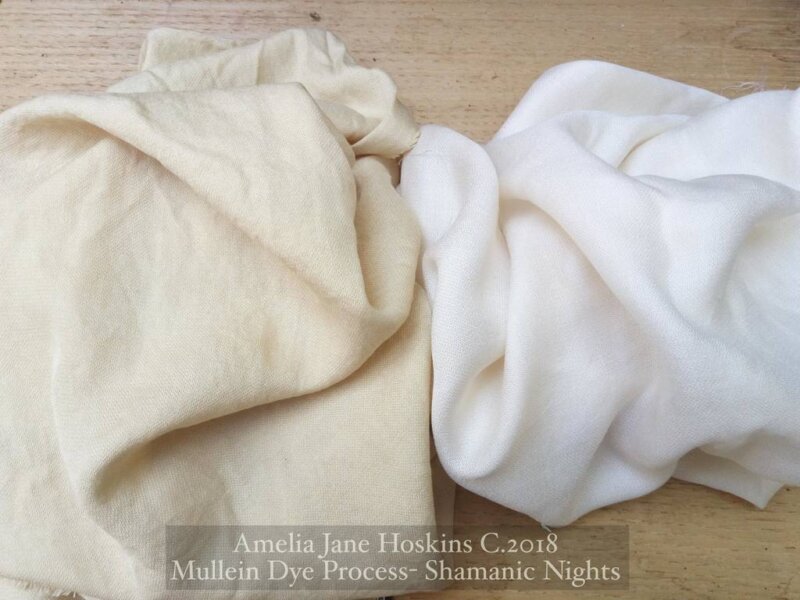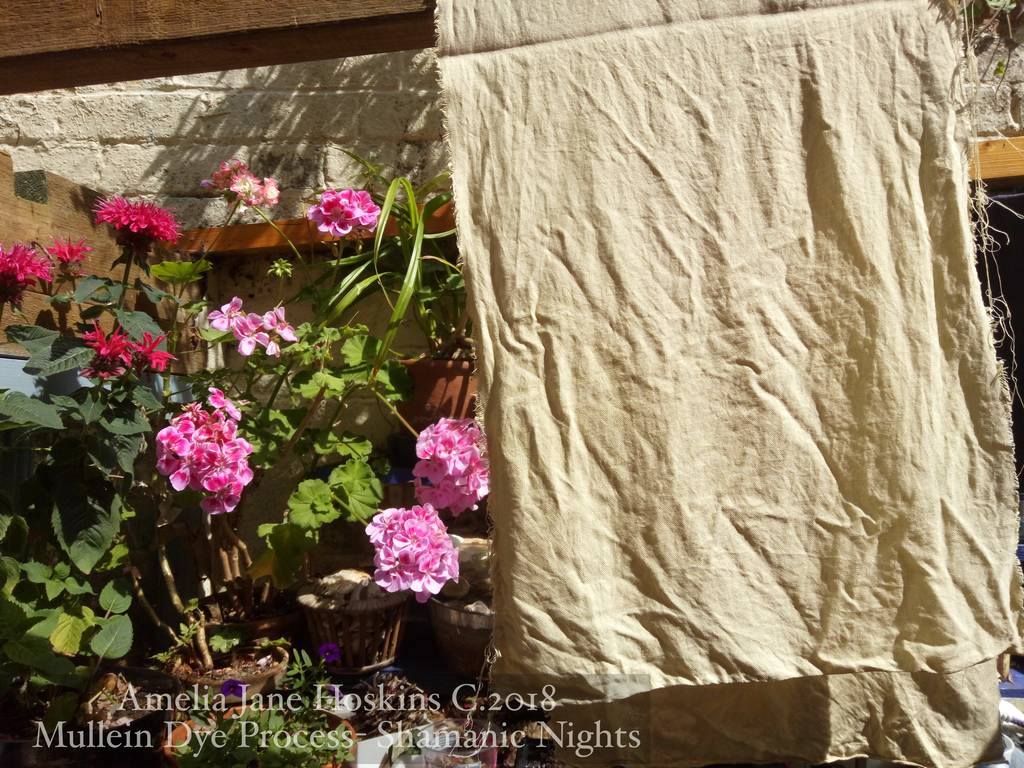Natural Dye Samples Autumn 2024
Autumn 2024 - some small silk samples with current plant stuffs.
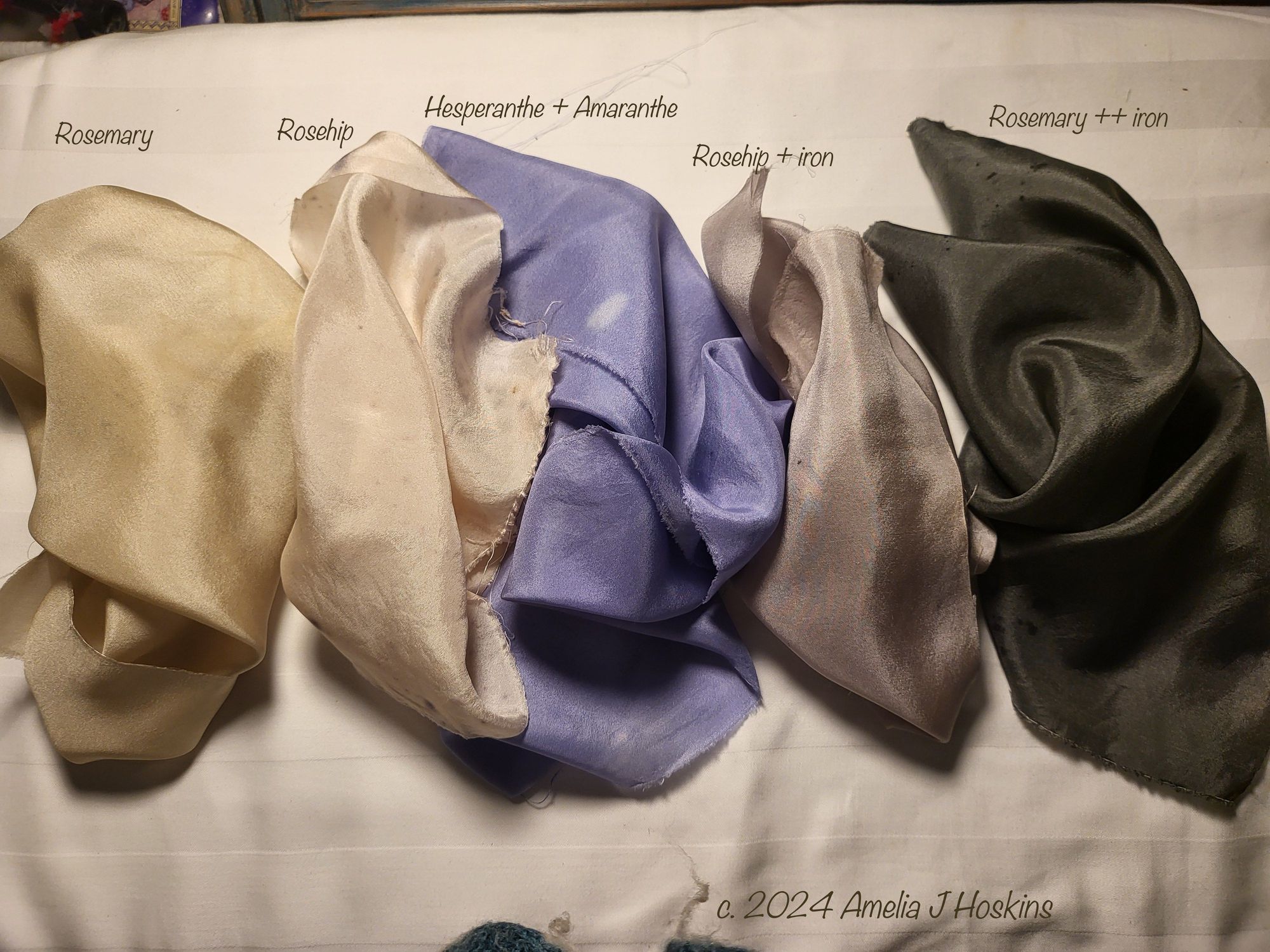
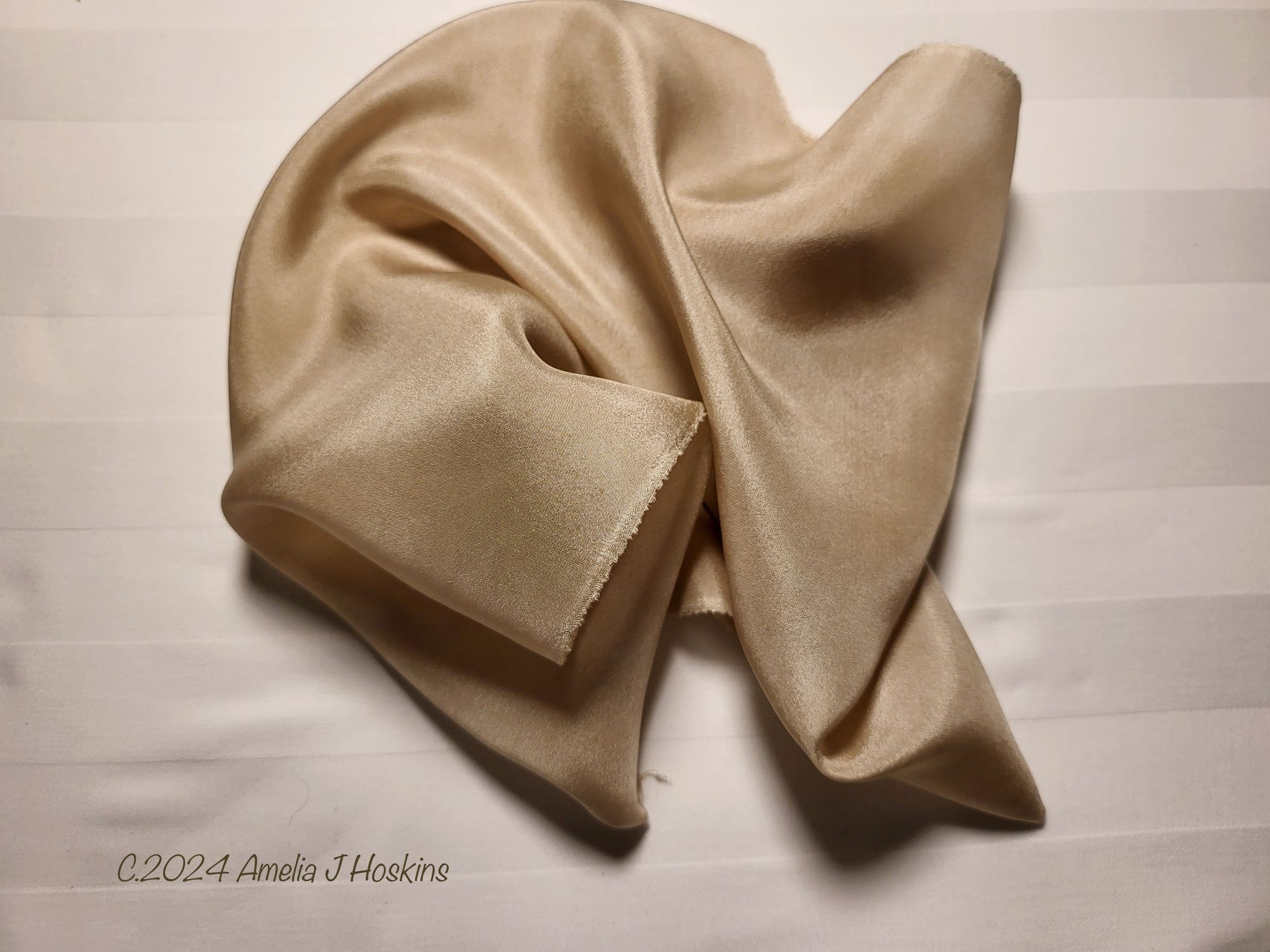
Mullein leaves dyed Habotai silk
Dyestuff collected from allotment Autumn 2024:
Soak dyestuff 24 - 48 hrs. Boil up, simmer for an hour. Add silk pieces when hand hot and leave for 2-4 days, checking for strength of colour. Heat up the slow cooker or pot each day to below boiling point, then leave silk to soak further. Silk will dye in cool liquid. Mullein took 4 days to reach golden. These samples were dyed with the dyestuff in the pots, which I don't normally do; to obtain ongoing release of pigment.
Extra samples tested with iron: either rusty nail 'iron water' or powder ferrous sulphate. Colours can be mixed by adding any dye+iron water to any plant/bark dye bath.
This year the rosehip dye result was not very strong, (previously has been peach or salmon pink); but did enable a faux 'alkanet' colour with a little iron added.
